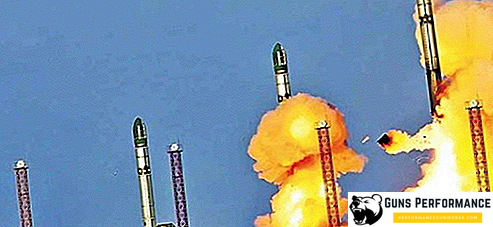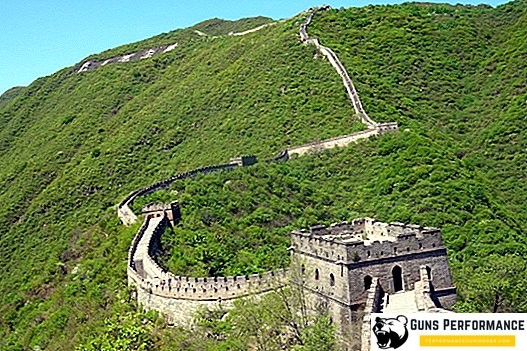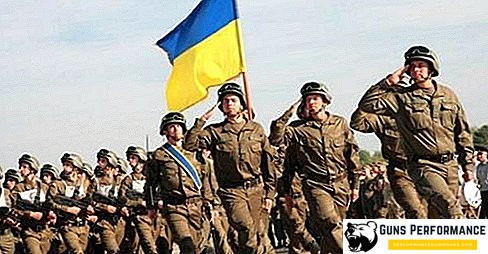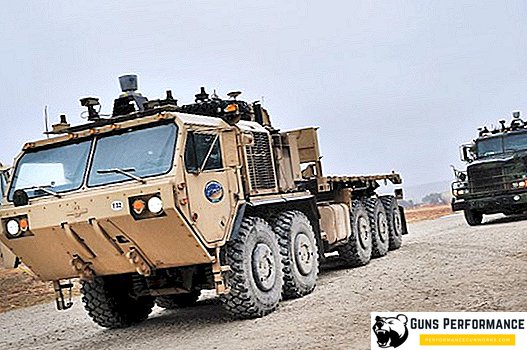Gas-53 is considered the most popular medium-duty truck of the Soviet period. Its production lasted more than 30 years. During this time, more than 4 million cars left the assembly line. The first prototype was presented in 1959, and mass production started in 1961, and it was completed in 1992.

Interior and exterior
Gas-53 dump truck had a modern design for its era. The radiator was completely trimmed with metal. Rama had high reliability, served for many years without breakdowns. An interesting decision of the designers was to place the gas tank under the cab, and its neck next to the driver's door. This turned out to be a plus when switching to gas: the new equipment could be installed under the body (all the trucks of that time had a gas tank there).
Ignition Gas-53 was advanced in the 1960s. Designers used electric starter. For added convenience, a heating system has been added (retains heat in the cabin in extreme cold) and electric wipers.
There were no separate seats for the driver and passengers - a combined sofa was present. Its size allowed several people in winter clothes to move comfortably. Behind the chair there is a special place for storing tools and other things.

Gas-53 sizes
Transport weight is 3200 kilograms, with a maximum load of 7850 kilograms. The documentation states that the “Worker” can transport cargo weighing up to 4,500 kilograms (the first versions up to 3,000 kilograms). In fact, he is capable of transporting 5 and 6 thousand kilograms, but in this case, it will be necessary to replace Gaz-53 springs as soon as possible.
The length of the truck is 6400 centimeters, width - 2400 cm. When unloaded, the height is 2200 centimeters. When fully loaded, it can reach speeds of up to 90 km / h, while empty at 110 km / h.

Rear Axle Gas-53 from the front separates 3700 centimeters. Ground clearance (265 millimeters) allows you to overcome obstacles of medium and small size, as well as shallow water obstacles.
With ideal road conditions (flat road, positive temperature and no precipitation), zero workload and speed of 40 kilometers per hour, fuel consumption is 24 liters per 100 km. Practice shows consumption of 27 liters per 100 km in the absence of congestion. At full load, the flow rate increases to 30 liters.

Cab and chassis
Cabin Gas-53 is an all-metal construction with two doors. The documentation indicates about one passenger seat, but two passengers and one driver can easily fit in the cabin. This is ensured by a wide sofa in which there is no division into places.
The frame of Gas-53 is the main element of the truck: the cab and the body are attached to it. It is also a connecting element between all the nodes of the truck. Bodies come in all sorts of different types: they fulfill certain goals and objectives: airborne, vans, tanks, etc.
Device
In the entire production history of the car, two petrol engines were used. The first was installed until 1967 - he had six cylinders. After that, the car was equipped with a 4-liter engine with eight cylinders. The Gas-53 engine received updates several times, however they were minor.
The design of the engine at the time has become innovative - located on top of the valve, aluminum block and cylinder head. Such a device of the engine was so much liked by consumers that it survived until our years: the initial appearance has only small changes.

It has the name ZMZ-53. Despite the technological breakthrough, the design had certain shortcomings. The distributor and ignition coil Gas-53 quickly broke down due to structural errors. The working resource reserve is 400 thousand km without major repairs. In the early years of production, the carburetor was single-chamber - this was the main reason for the high fuel consumption. Then they began to use a two-chamber, it reduced consumption.
The suspension of the car Gas-53 was spring dependent. The front part was equipped with shock absorbers. The power steering was not added to the design of the steering mechanism; therefore, it is difficult to control the transport, it is required to exert considerable physical effort. The speeds are switched using double clutch release. Cardan gear consists of two shafts, they are mounted with special hinges.
The design has more pluses than minuses. It has a simple design, rarely breaks. It can be easily repaired even in the field. Spare parts are in all specialized stores, are inexpensive. Wires in electronics uses a minimum amount, they can even figure out the novice electrician.

A liquid cooling system is used to maintain optimal temperature parameters of the motor. In the USSR, antifreeze and antifreeze were not used by truck users: they poured water into the cooling tank. In winter, after the end of transport operation, water was poured off, and in the morning they were poured again. When using hot water, it was possible to speed up the process of starting and warming up the power unit.
The cylinders are located in two rows - four in each. For each row there is one cylinder block. The block and heads were made from aluminum. The heads are separated by an intake manifold, in the center of the design of which the carburetor is placed.
The braking system is equipped with a hydraulic drive. The rear and front axle are affected by two different circuits. The parking brake is mechanical and consists of a drum mechanism that is installed on the back of the Gas-53 gearbox.

Transmission
Gas-53 - rear-wheel drive vehicles, rear-axle Gas-53 - leading. To start the movement used gearbox and drive shaft. The smooth operation of the clutch at the "Worker" is important for a comfortable ride: to get under way with his defects will be problematic.
For smooth operation of the clutch, it is equipped with a hydraulic drive. It includes two disks: master and slave. The master drive is used to configure the squeeze. The gearbox has 5 speeds - four front and one rear. The third and fourth gears are synchronized.
The first and second gears are not synchronized, so you need to use double squeezing to switch. Gearboxes of this transport were developed on the basis of the Gas-51 box, there were no synchronizers there.

Modifications
On the basis of the legendary car was released a lot of different modifications. The main versions of the dump truck are:
- Gas-53F - production lasted from 1961 to 1967. The engine had six cylinders and developed 82 horsepower. Maximum load - 3500 kilograms. Fuel consumption was 22-25 liters per 100 km, the highest speed - 75 km / h;
- Gas-53 and Gas-53A - production lasted from 1964 to 1983. The engine had eight cylinders and developed 115 horsepower. The maximum load is 4000 kilograms. Per 100 kilometers took 25-28 liters of gasoline, and the highest speed was 85 km / h;
- Gas-53-12 - production lasted from 1983 to 1992. The engine had eight cylinders and developed 120 horsepower. Maximum load - 4500 kilograms. Up to 30 liters of fuel went per 100 km of track, it was possible to accelerate to 90 km / h;
- Gas-53-19 - production lasted from 1984 to 1992. Methane was used for movement, the engine developed 105 horsepower, and the maximum speed was 80 kilometers per hour;
- Gas-53-27 - production lasted from 1984 to 1992. Vehicles moved on propane, the power of the Gas-53 was 100 horsepower, it was possible to accelerate to 80 km / h.

What can be concluded?
During its long history, the car showed itself from the best sides: it is simple in structure, easily repaired and does not require large investments for maintenance. If you regularly conduct technical inspections and eliminate minor defects, the engine can travel more than 400 thousand km without major repairs.
The “hard worker” has its drawbacks: an inconvenient clutch, which makes it inconvenient to start, problems with electronics, the Gaz-53 spring breaks under heavy workload and other trifles. Not all users like the expense - many consider it high. Gas-53 diesel solves the problem with high gas mileage.
Some instances are already over half a century old, but they continue to work. You can buy transport in the secondary market. In poor condition, you can buy a car for 60-100 thousand rubles. Cars in acceptable condition will cost the buyer 200-250 thousand rubles. Trucks with special bodies cost 300 thousand rubles.












